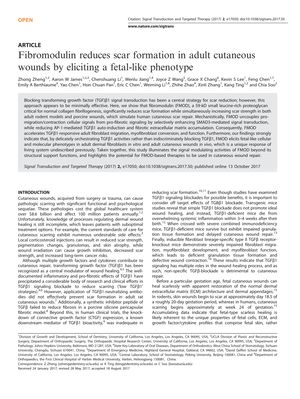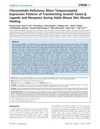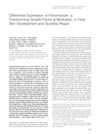Fibromodulin Reduces Scar Formation in Adult Cutaneous Wounds by Eliciting a Fetal-Like Phenotype
October 2017
in “
Signal Transduction and Targeted Therapy
”

TLDR Fibromodulin treatment helps reduce scarring and improves wound healing by making it more like fetal healing.
The 2017 study found that fibromodulin (FMOD) treatment can significantly reduce scar formation and improve the quality of wound healing in adult rodents and pigs by promoting a fetal-like healing phenotype. FMOD modulates transforming growth factor-beta 1 (TGFß1) signaling, which leads to more organized collagen architecture, enhanced fibroblast migration, myofibroblast conversion, and function, without promoting fibrotic extracellular matrix production. The study involved in vitro and in vivo experiments with adult rat dermal fibroblasts and wound models in mice, rats, and pigs, with sample sizes specified in the figure legends. The findings suggest that FMOD-based therapies could be a potential treatment for cutaneous wounds, offering a more refined approach to TGFß1 signaling modulation compared to strategies that block TGFß1 indiscriminately. However, FMOD alone does not fully replicate fetal-type scarless healing, indicating that other factors also play a role in scarring, and further research is needed to fully understand the wound healing process.



